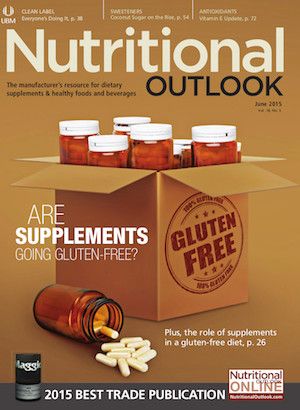Vitamin E's Alternative Sources
Currently, the vast majority of natural vitamin E sold in the United States hails from refined soybean oil.

Currently, the vast majority of natural vitamin E sold in the United States hails from refined soybean oil, which leaves it susceptible to sharp spikes and falls in soybean pricing. Just this year, for example, January saw soybean prices fall nearly 4% due to a record 2014 harvest that yielded more supply than predicted by analysts-about 4 billion bushels in total, according to the U.S. Department of Agriculture (USDA). And the trend doesn’t seem to be stopping; 2015 looks to also hold a higher soybean supply than forecasted.
That’s the good news. The bad news is that drought conditions can change this outlook in an instant; so, too, can consumer demands such as those for allergen- and GMO-free offerings. While FDA exempts highly refined soybean oil from being labeled as an allergen (most individuals with a soy allergy can safely consume it), still other consumers seek to limit their intake, whether it’s because of a severe allergy or a desire to offset its prevalent use in many packaged foods. More concerning is the GMO issue since, according to the USDA, more than 90% of the soybeans grown on American farms each year are genetically engineered. Organic options, on the other hand, are few and far between-less than 1% of the roughly 74 million acres harvested was grown organically by the last count taken in 2011 (and reported in 2013) by the USDA.
Suppliers are answering this concern with alternative approaches. One option, of course, is synthetic vitamin E; however, according to the National Institutes of Health’s Office of Dietary Supplements, lab-made vitamin E is less potent than its natural counterpart, with about 150 IU of synthetic vitamin E needed to reach the same potency attained by 100 IU of natural vitamin E. Manufacturers looking for natural alternatives may be interested in sunflower seed oil, which is not genetically modified and has experienced a relatively flat pricing trend, says Michael Sodaro, vice president of sales at Nutralliance (Yorba Linda, CA). “We believe that although our market share of the extremely large overall vitamin E market is small, it continues to grow at a tremendous rate,” he says of the company’s sunflower-derived offering.
In the end, formulators have a few options: ride out the soybean price fluctuations, switch to synthetic, or explore GMO-free alternatives to meet growing demand. The bottom line is that, however it’s obtained, vitamin E supplementation is greatly needed, says Andrea Wong, PhD, vice president of scientific and regulatory affairs at the Council for Responsible Nutrition (Washington, DC), since just 7% of consumers get enough from diet alone.
Also read:
Vitamin E Status Linked to Miscarriage?
Alpha-Tocopherol Doesn’t Break Down Other Vitamin E Forms
Photo © iStockphoto.com/ghornephoto
















